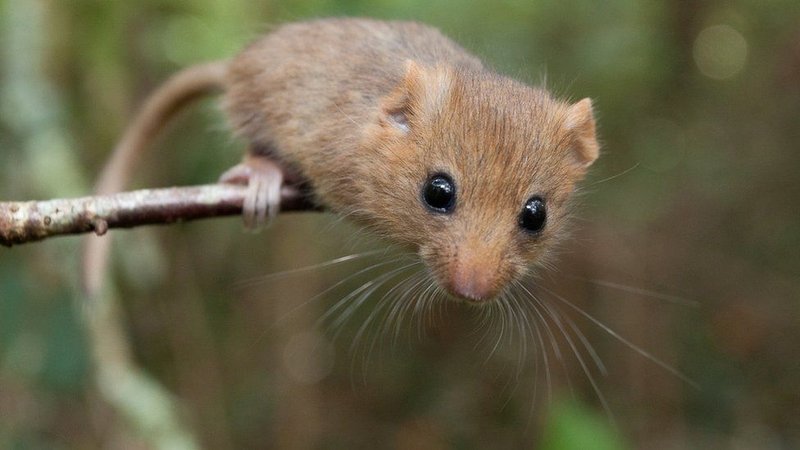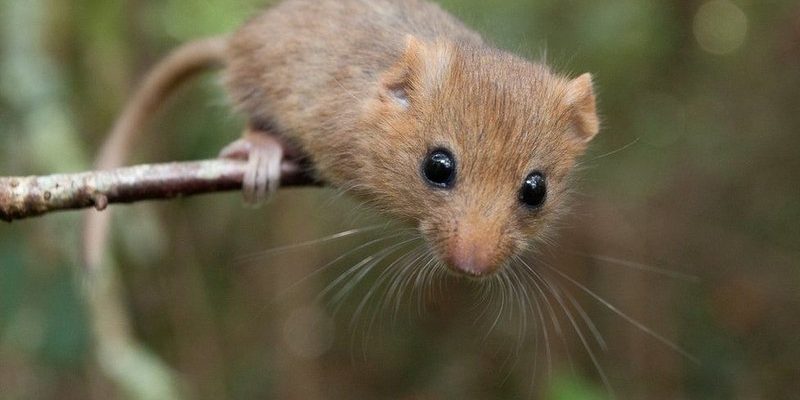
The Forest Dormouse is one of those delightful surprises you might encounter in the heart of the woods. Imagine a small, fluffy ball of fur with big eyes that seem to twinkle with curiosity. These little creatures are not just adorable; they play a vital role in their ecosystem. If you’ve ever seen a tiny, shy animal scurrying through the underbrush, chances are it could be a Forest Dormouse, blissfully unaware of the joy it brings to nature-lovers everywhere.
Forest Dormice belong to the family Gliridae and are found primarily in Europe, particularly in wooded areas. You might think of them as a blend of a mouse and a squirrel. They have this charming ability to climb trees and leap between branches, a skill that helps them find food and evade predators. With their nocturnal habits, they come alive at night, making them a fascinating study for those interested in wildlife.
In this article, we’ll dive deep into what makes the Forest Dormouse so special, exploring their habitat, diet, behavior, and much more. So grab a cozy blanket, maybe a hot drink, and let’s take a stroll through the world of this enchanting creature.
Physical Characteristics of the Forest Dormouse
The Forest Dormouse is a small rodent, typically weighing between 50 to 80 grams and measuring around 8 to 10 inches in total length, including its tail. Their fur is soft and fluffy, often a rich brown or golden hue, providing excellent camouflage against the forest floor. This coloration helps them blend into their surroundings, keeping them safe from predators.
One of the most distinctive features of the Forest Dormouse is its large, expressive eyes. These eyes are perfectly designed for nighttime activities, giving them excellent night vision. They also have long whiskers and tiny, nimble feet that enable them to navigate their arboreal habitats with ease. Their tails are long and bushy, often used for balance when they’re climbing or jumping from branch to branch.
The Forest Dormouse’s physical adaptations are certainly fascinating. Its lightweight body allows for agile movements, helping it escape from threats like birds of prey or other larger mammals. On a chilly night, you might even notice them curled up tightly in their nests, showcasing their ability to conserve heat during cold spells.
Habitat and Distribution
Forest Dormice thrive in a variety of wooded habitats, from deciduous forests to mixed woodlands. They prefer areas with plenty of underbrush and dense tree cover, which offer hiding spots and food sources. It’s in these lush environments that they feel most at home, building nests in tree hollows or dense shrubs. The choice of habitat is crucial for their survival; it provides not only shelter but also protection from predators.
Geographically, the Forest Dormouse is primarily found in Europe, spanning regions from central to southern parts. Their range includes countries like France, Spain, and parts of Italy, where the climate suits their needs. Interestingly, they tend to be found at lower altitudes, where food resources are abundant and the risk of extreme weather is reduced.
Interestingly, these dormice are also seasonal in their distribution. In colder months, they may retreat to lower areas to escape harsh conditions. This migratory behavior is a fascinating aspect of their lifestyle and highlights their adaptability. As climate change impacts their habitats, understanding how they navigate these challenges is essential for their conservation.
Diet and Feeding Habits
What do Forest Dormice eat? Their diet is quite varied and primarily consists of seeds, fruits, nuts, and flowers. They have a particular fondness for berries during the summertime, which are rich in sugars and provide much-needed energy. Their feeding habits are critical not just for their survival but also for the ecosystem; as they consume and disperse seeds, they contribute to plant propagation.
During the spring and summer months, you’ll find them foraging for food in the undergrowth and among branches. They often gather nuts and store them for the winter. This behavior is quite similar to that of squirrels, showcasing their resourcefulness. It’s almost as if they know the importance of planning ahead, preparing for those frosty months when food is scarce.
One interesting aspect of their diet is how they adapt based on the seasons. In the fall, as food sources dwindle, they ramp up their foraging efforts to ensure their nests are stocked for the winter. This seasonal rhythm is a captivating example of how the Forest Dormouse interacts with its environment—a true testament to nature’s wisdom.
Behavior and Social Structure
Forest Dormice are primarily solitary creatures, although they may be found in small family groups during certain times. Their behaviors are often nocturnal, meaning they are most active during the night, which is when they go out to forage for food. This nighttime activity allows them to avoid many predators that hunt during the day.
When it comes to communication, these dormice use a mix of vocalizations, scents, and body language. If you’ve ever heard a soft squeak or chirp in the woods, it could be a Forest Dormouse expressing discomfort or warning others of danger. Their sense of smell is also very keen, aiding them in navigating their territory and finding food.
Interestingly, Forest Dormice are known for their playful nature. They can often be seen clambering around their tree branches, engaging in gentle tussles or playful chases. This behavior is not just for fun; it’s likely a way to strengthen social bonds. In a way, they remind us of our own playful pets, indulging in antics that bring joy both to themselves and those watching.
Reproduction and Lifespan
Reproduction in Forest Dormice typically occurs during the warmer months, usually from late spring to early summer. After a gestation period of about three weeks, female dormice give birth to litters ranging from two to six young. These tiny, hairless babies are incredibly vulnerable and depend on their mother for survival during the initial weeks.
Once born, the young dormice grow rapidly, starting to explore their surroundings as they become more independent. By the time they reach about four weeks old, they begin to eat solid food, often sharing in the same delightful diet as their parents. This early learning phase is crucial; it sets the stage for their own survival skills as they grow.
In terms of lifespan, Forest Dormice tend to live around 2 to 4 years in the wild. However, in captivity, with proper care, they can live significantly longer. This short lifecycle in the wild emphasizes the challenges they face, from predators to habitat loss. It’s a reminder of the delicate balance of nature and how each species plays its part.
Conservation Status
Despite their charming demeanor, Forest Dormice are facing threats due to habitat loss and changes in land use. As forests are cleared for agriculture or urban development, their natural habitats shrink, making it harder for these small creatures to thrive. This loss of habitat is a significant concern for wildlife conservationists.
In many areas, conservation efforts are underway to create protected habitats that allow Forest Dormice to survive and thrive. These initiatives involve restoring areas of woodland and ensuring that natural food sources are preserved. By raising awareness about the importance of preserving their habitats, we can contribute to the survival of this delightful species.
Interestingly, some regions have implemented special measures, like creating wildlife corridors, that connect fragmented habitats, allowing Forest Dormice to navigate between areas more easily. These efforts showcase how we can take action to protect our beloved wildlife and ensure that these charming creatures continue to grace our forests for generations to come.
Interesting Facts About the Forest Dormouse
| Scientific Name | Glirulus glirulus |
| Size | 8–10 inches (including tail) |
| Weight | 50–80 grams |
| Habitat | Deciduous and mixed forests |
| Diet | Seeds, fruits, nuts, and flowers |
| Lifespan | 2–4 years in the wild |
| Activity Period | Nocturnal |
FAQ
What is a Forest Dormouse’s primary diet?
The Forest Dormouse primarily feeds on a diet rich in seeds, fruits, and nuts. They particularly enjoy berries during the summer months, providing them with essential energy. During the fall, they gather food to store for winter, showing remarkable foresight and planning.
How do Forest Dormice adapt to winter?
During winter, Forest Dormice enter a state of torpor. This is similar to hibernation but less intense, allowing them to save energy. They may reduce their activity significantly and rely on food stores they’ve collected during warmer months. They nest in sheltered areas, which helps them stay warm and conserve energy during cold spells.
Are Forest Dormice social animals?
Typically, Forest Dormice are solitary creatures, though they can occasionally be seen in small family groups. They are mostly nocturnal and often prefer to keep their distance from others outside breeding season. Their interactions are usually limited to mating or when young are learning from their parents.
How long do Forest Dormice live?
In the wild, Forest Dormice generally live for about 2 to 4 years. However, with proper care in captivity, they can live significantly longer. Their short lifespan highlights the challenges they face from predators and habitat loss in their natural environments.
What threats do Forest Dormice face?
Forest Dormice are threatened primarily by habitat loss due to deforestation and urban development. As their natural habitats shrink, their food sources become scarce, leading to population declines. Conservation efforts aim to protect these creatures and their habitats to ensure their survival in the wild.
Do Forest Dormice have any natural predators?
Yes, Forest Dormice face threats from a variety of natural predators, including birds of prey, snakes, and larger mammals. Their ability to hide and climb can help them escape these dangers, but they remain vulnerable during their young stages.
Can Forest Dormice be kept as pets?
While some people do keep dormice as pets, it is essential to ensure they are cared for properly. They require specific habitats and diets to thrive. Additionally, owning a Forest Dormouse may be subject to local wildlife laws, so it’s crucial to check regulations before considering them as pets.
How can I help protect Forest Dormice?
You can help protect Forest Dormice by supporting conservation efforts in your area. This includes participating in local wildlife programs, planting native trees and plants, and advocating for the preservation of natural habitats. Every small action contributes to a larger effort in protecting these charming creatures.
Where can I see Forest Dormice in the wild?
Forest Dormice are primarily found in Europe, particularly in wooded areas of countries like France and Spain. If you’re keen on seeing these elusive creatures, visiting nature reserves or national parks in their range during the evening may increase your chances of spotting them.
Are Forest Dormice nocturnal?
Yes, Forest Dormice are nocturnal creatures, meaning they are most active during the night. This adaptation helps them evade many predators that hunt during the day and allows them to forage for food under the cover of darkness.
What role do Forest Dormice play in their ecosystem?
Forest Dormice play a significant role in their ecosystems as seed dispersers. By consuming and scattering seeds, they help maintain plant diversity and promote forest growth. Their activities contribute to the overall health of the woodland environment, showcasing how even small creatures can have a big impact.
How do scientists study Forest Dormice?
Scientists study Forest Dormice through various methods, including tracking their movement with tiny radio collars and monitoring their populations through field surveys. These studies help researchers understand their behavior, diet, and conservation needs, contributing valuable information for their protection.

